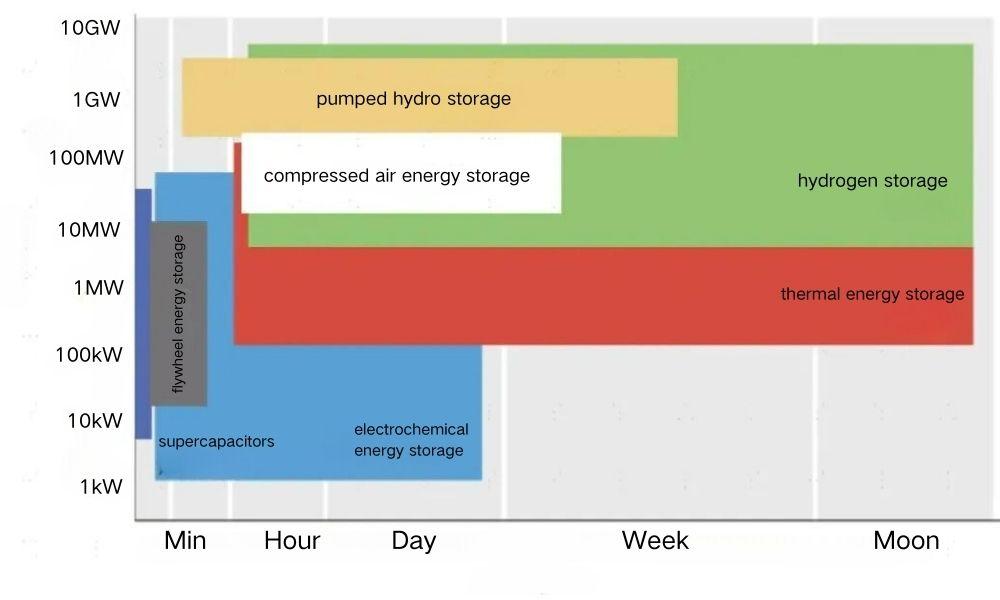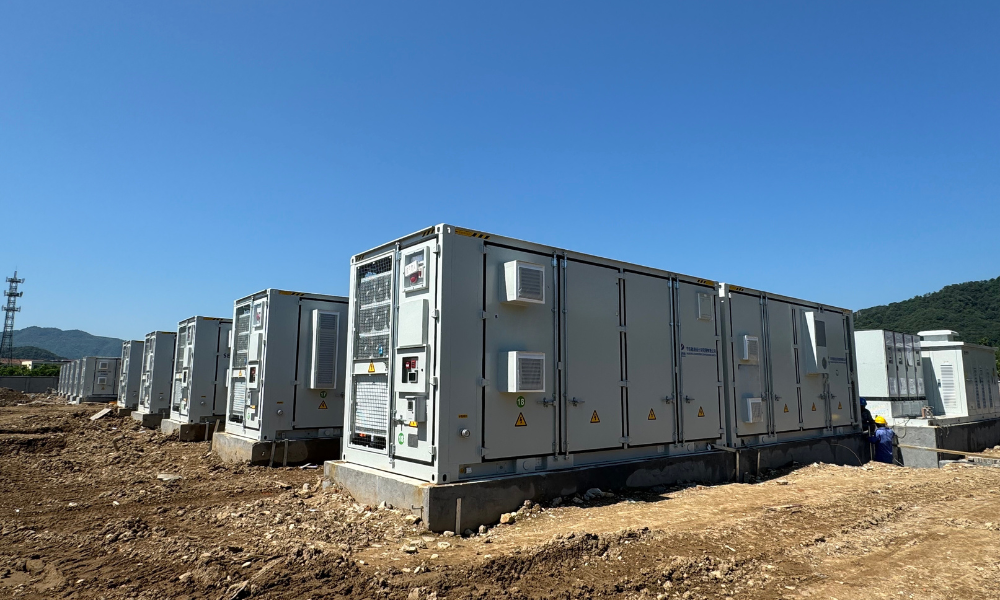New Trend: Long-Duration + Short-Duration Hybrid Energy Storage Systems
Definition
Short-Duration Energy Storage
Typically refers to energy storage systems capable of storing and releasing energy for about 2 hours. Primarily used to balance instantaneous load changes in the power grid. Such as lithium-ion batteries and supercapacitors.
Long-Duration Energy Storage
Long-duration energy storage, abbreviated as "LDES," generally refers to systems that can store and release energy for over 4 hours, with some definitions even extending it to more than 10 hours. Common forms include pumped hydroelectric storage, compressed air energy storage, and lithium-ion batteries.

Application Scenarios
Short-duration energy storage can quickly release energy within minutes to a few hours, mainly used for:
Grid ancillary services: Fast response to grid power changes, participating in frequency regulation and peak shaving, enhancing grid stability. For example, it is quickly adjusted to stabilize the power within a safe range in the event of abnormal fluctuations.
Emergency power supply: Providing short-term emergency power to commercial and industrial users with high continuity requirements, reducing economic losses from power outages.
Long-duration energy storage can satisfy power demand for longer periods of time and is generally applied to improve the stability and reliability of power systems.
Large-Scale Renewable Energy Integration: Addressing the intermittency of renewable energy by storing excess energy across seasons, ensuring stable supply throughout the year.
Peak and valley arbitrage: Taking advantage of the difference in electricity prices by storing electricity during low price periods and releasing it during high prices, reducing the cost of electricity and bringing economic benefits.

Technical Characteristics
Short-Duration Energy Storage
Fast Response Speed: Equipped with rapid charge and discharge capabilities, they can quickly respond to changes in grid power demands. For example, power-type lithium-ion batteries and supercapacitors exhibit high power density and rapid response characteristics.
Relatively Low Cost: Due to shorter storage times and lower capacity requirements for equipment, system costs can be reduced. However, high-performance batteries may be needed for high-power demand applications, which can increase costs.
Short power supply time: It can only be used as a short-term power supply device and cannot meet long-term energy demand.
Long-Duration Energy Storage
Large Capacity Storage: Requires large storage capacity to meet long-term energy demands. Common technologies include pumped hydro storage, compressed air storage, and flow batteries, which provide high energy storage capacity and long lifetimes.
High Technical Complexity: Long-duration storage involves complex engineering design and operational management, considering factors like terrain, geology, and environmental impact. Additionally, construction and operational costs are relatively high and require a comprehensive evaluation of economic and social benefits.
Future Development Trends
The long-duration + short-duration hybrid energy storage system, as the name suggests, is a model that combines the advantages of both. Its advantage over traditional single storage technologies is that it combines multiple storage technologies to make up for the shortcomings of a single storage technology, thus improving the overall system operating efficiency.
The intelligence and flexibility of hybrid storage technology are enhanced through the application of new technologies such as computers and IoT. The efficiency of energy storage can be maximized by coordinated control of energy storage devices while allowing for dynamic adjustments and optimized scheduling of the power supply network, enhancing the stability and quality of microgrids.
In addition, hybrid energy storage helps to reduce system costs. By sharing power electronics and grid connection hardware, initial installation and maintenance costs are reduced. With the combination of lithium batteries and other technologies, hybrid energy storage applications are gradually adapting to the needs of diverse scenarios.
In the long run, with the richness of energy storage application scenarios and the maturity of technology, under the comprehensive consideration of economy and applicability, hybrid energy storage combination applications will become the main development trend.
Summary
The long-duration + short-duration hybrid energy storage system represents an important innovation in modern energy management, providing more flexible, efficient, and sustainable energy solutions.
However, hybrid energy storage technology is still in its early stages, with key applications not yet fully matured and related projects remaining in the demonstration phase. Needs to be continuously improved according to actual scenarios. With advancements in storage technology and the development of AI, long-duration, and short-duration hybrid energy storage technologies will play a greater role in the construction of new power systems.